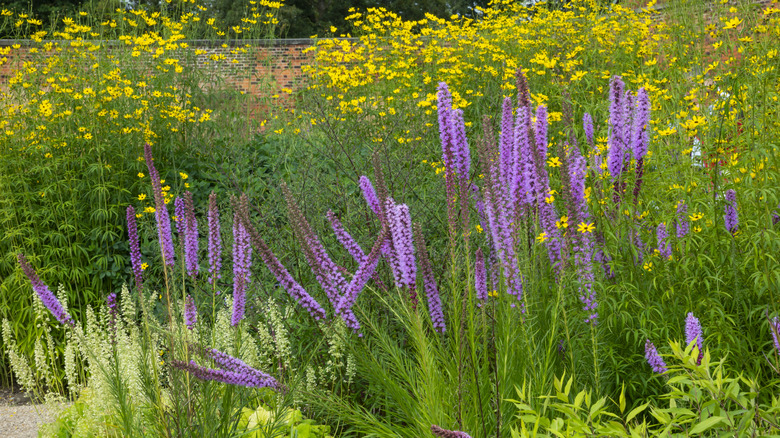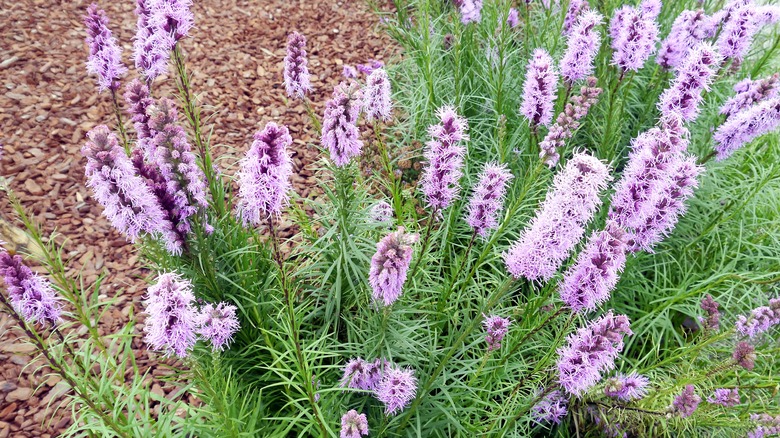The Biggest Problem That May Occur When Growing Blazing Star Plants
Blazing star plants (Liatris spp.) are magnificent perennials that are native to North America and the Bahamas. They can be grown in USDA hardiness zones 3 through 9, and are an excellent addition to cottage, butterfly, cutting, meadow, and native gardens. Plus, there are some beautiful varieties of blazing star that hummingbirds will love in your garden. Their outstanding flower stems can reach a height of up to 5 feet, which means that they'll tower over other plants to create an overall stunning display. But there's one major problem that you need to be aware of when growing these attractive plants in your garden to ensure that they thrive. Blazing star plants need well-drained soil, and they will rot if their roots and underground bulbs, corms, or rhizomes are allowed to sit in wet soil over winter.
To avoid this problem, you need to choose your planting site carefully to ensure there's plenty of drainage and there's absolutely no chance of the soil remaining wet for any length of time. Apart from too much moisture rotting your plants from below the ground, it will also cause the tall flower stems to fall over. Because these plants are perfectly adapted to poor soils and drought conditions, you should be aware that overly nutrient-rich soils or applying too much fertilizer will also cause the flower spikes to fall over.
How to avoid problems when growing blazing star plants
Blazing star is one of several gorgeous flowering plants that will have goldfinches flocking to your yard in no time, so don't be discouraged from growing it. You can even make your own birdseed by growing these beautiful plants in your garden. If you have sandy soils, this should provide ideal growing conditions for blazing star plants because the drainage will be good. However, you do need to ensure that the plants receive adequate moisture, especially in their first growing season, to allow them to establish a strong root system. When grown commercially for the cut flower industry, these plants are most commonly grown in raised beds to facilitate excellent drainage. While this might not be practical if you're planting them in a meadow or cottage garden, you could grow them in raised mounds instead, to encourage better drainage.
If you happen to be gardening on a slope, plant your blazing stars near the top of the slope rather than further down so that any excess water can easily run off and not sit around the base of the plants. If all else fails, you can always grow Liatris in containers with good drainage holes and place these among the other plants in your perennial garden. Just remember that container-grown plants will need some additional fertilizer, but make sure that you don't overfeed your blazing star plants by selecting a balanced fertilizer and following the recommended dosages on the pack.

